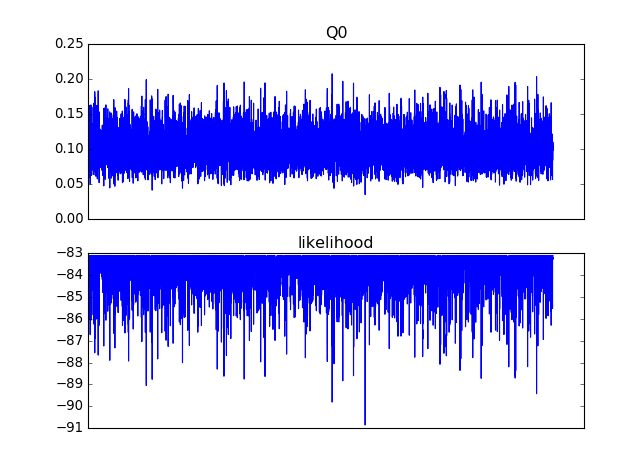I've got a model that goes: Single parameter -> Complex likelihood function -> Log-likelihood. I executed an MCMC chain (using pymc) and plotted the trace of the parameter and the log-likelihood. The parameter estimate ended up being reasonable, but the log-likelihood plot looks strange to me.
The log-likelihood never goes above a certain value. I suppose this makes sense, if that value is the maximum likelihood value, but I've never seen a likelihood trace that looks like this before. my question is: is this normal?

